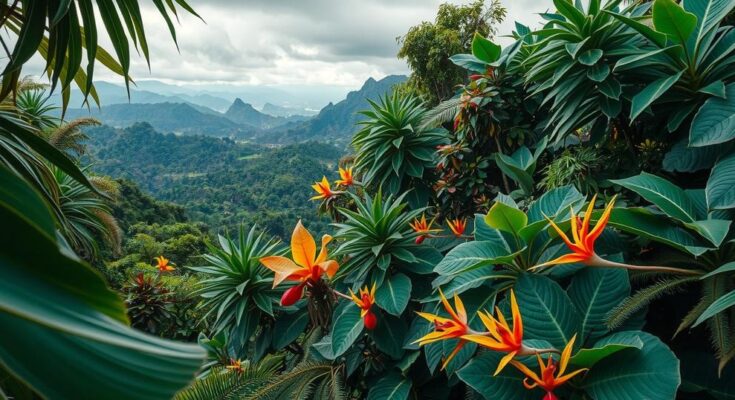Papua New Guinea, covering 73 million hectares of rainforest, is home to a significant portion of the world’s biodiversity, including over 779 bird species. The national bird, Kumul, reflects the rich cultural relationship between birds and the local populace. Despite its significance, the region faces threats like deforestation and climate change, necessitating urgent conservation efforts involving community participation and environmental education.
Papua New Guinea encompasses 73 million hectares of rainforest, featuring a variety of ecosystems from tropical forests to pristine coastlines. This region constitutes just 1% of the Earth’s surface and ranks as the world’s third-largest rainforest, following the Amazon and the Congo. The nation is a haven for biodiversity, housing at least 7% of global species, with many unique to the area. Approximately 4,642 vertebrate species inhabit the rainforest, representing nearly 8% of all vertebrates worldwide.
In subsequent discussions, Post Courier Online will highlight the avian diversity of Papua New Guinea. As per the second edition of Princeton Field Guides, the country hosts over 779 bird species, an increase from 709 recorded in the first edition, encompassing about 7% of global bird species. Furthermore, 108 of these species are endemic, attributed to the country’s diverse habitats, including lowland forests, montane forests, mangroves, and coastal islands.
Birds hold significant cultural importance for the people of Papua New Guinea, with deep-rooted connections reflected in rituals, dances, songs, and traditional attire. The Kumul – Paradisaea raggiana, the national bird, symbolizes this connection and is featured prominently on the national flag. Renowned for its vibrant plumage and elaborate courtship displays, it represents the country’s rich avifauna.
Another extraordinary species, the Hooded Pitohui – Pitohui dichrous, is scientifically noted as the first toxic bird. Its feathers and skin harbor a neurotoxin, homobatrachotoxin, causing pain upon contact. The discovery of this bird in 1989 emphasizes the vast, unexplored potential within Papua New Guinea’s flora and fauna.
Water birds such as herons, egrets, and ducks flourish in the region’s mangroves, rivers, and lakes, contributing to aquatic ecosystem health by regulating fish populations and supporting migratory birds on their seasonal journeys. These habitats are vital for both local wildlife and global biodiversity.
However, Papua New Guinea’s extraordinary biodiversity faces significant threats from human activities, including deforestation, forest degradation, overexploitation of resources, and climate change. According to the International Union for Conservation of Nature (IUCN) Red List 2018, 4,315 animal species in the country are categorized as threatened.
To confront these challenges, a collaborative approach is essential for advancing conservation and sustainability. Priority measures involve enforcing conservation laws, bolstering community-led initiatives, and fostering environmental education. Integrating Indigenous communities, who possess profound knowledge of their environment, is crucial to effectively protecting biodiversity.
Educational efforts are paramount for enhancing public awareness about biodiversity and the associated risks. Understanding the value of natural resources and the dangers they face is vital. This column aims to contribute to raising consciousness regarding the significance and abundance of Papua New Guinea’s biodiversity and cultural heritage.
Papua New Guinea is a vital megadiverse region with substantial ecosystem diversity, playing a crucial role in global biodiversity conservation. Its rich avian species and unique wildlife illustrate the intricate connections between culture and nature. However, the threats posed by environmental degradation demand urgent conservation efforts, including community engagement and the implementation of sustainable practices. Educating the public about biodiversity is essential for safeguarding the future of this remarkable nation.
Original Source: www.postcourier.com.pg




